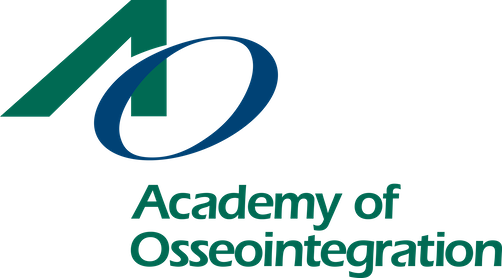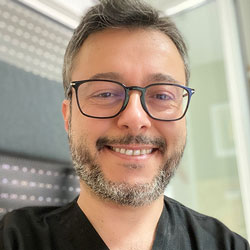-
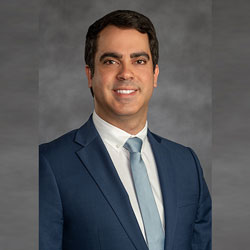 Rafael Siqueira, DDS, MS, PhD Immediate implant placement is a surgical approach that gained tremendously in popularity and patient acceptance throughout the years. One of the most desirable features of this technique is the potential in optimizing esthetic success by preserving the existing osseous and gingival architecture, with a reduced overall treatment time, invasiveness, and cost. However, unsuccessful treatments can occur if crucial biological principles are not respected. A thorough discussion concerning the bone remodeling process that occurs after tooth extraction and the 3D implant positioning in immediate implants is required. Together, these two factors will dictate the outcome of the peri implant tissue dimensions and architecture by their direct influence and interactions with other essential elements such as periodontal phenotype, loading protocol, abutment/prosthesis design, hard and soft-tissue augmentation. Recorded - April 20, 2022
Rafael Siqueira, DDS, MS, PhD Immediate implant placement is a surgical approach that gained tremendously in popularity and patient acceptance throughout the years. One of the most desirable features of this technique is the potential in optimizing esthetic success by preserving the existing osseous and gingival architecture, with a reduced overall treatment time, invasiveness, and cost. However, unsuccessful treatments can occur if crucial biological principles are not respected. A thorough discussion concerning the bone remodeling process that occurs after tooth extraction and the 3D implant positioning in immediate implants is required. Together, these two factors will dictate the outcome of the peri implant tissue dimensions and architecture by their direct influence and interactions with other essential elements such as periodontal phenotype, loading protocol, abutment/prosthesis design, hard and soft-tissue augmentation. Recorded - April 20, 2022 -
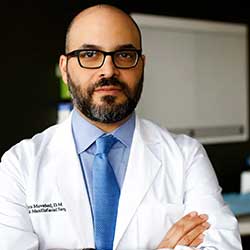 Reza Movahed, DMD Indications for application of total temporomandibular joint replacement (TJR) and maxillomandibular advancement (MMA) are multifaceted and vary from case to case, and it is imperative for the clinician to understand all the contemporary approaches and literature when considering the appropriate treatment for airway disorders, obstructive sleep apnea (OSA) , TMD, craniofacial deformities and trauma. The proper diagnosis must be supported by the necessary studies, including TMJ MRI, CBCT, polysomnography, and clinical findings. The correct option and timing of surgery is paramount to the long-term success of each case. Tailored treatment planning will be discussed in conjunction with cutting edge digital workflow to increase success and predictability of surgical and stable orthodontic outcomes. Upon completion of this presentation, participants should be able to: 1) Explain the various TMJ pathologies requiring TJR. 2) Describe when to use TJR to ensure the most stable biomechanical outcomes. 3) Recognize the available methodologies including clinical assessment, CT scan, and MRI for utilizing TJR as part of the ortho-surgical treatment. Recorded on May 1st, 2025
Reza Movahed, DMD Indications for application of total temporomandibular joint replacement (TJR) and maxillomandibular advancement (MMA) are multifaceted and vary from case to case, and it is imperative for the clinician to understand all the contemporary approaches and literature when considering the appropriate treatment for airway disorders, obstructive sleep apnea (OSA) , TMD, craniofacial deformities and trauma. The proper diagnosis must be supported by the necessary studies, including TMJ MRI, CBCT, polysomnography, and clinical findings. The correct option and timing of surgery is paramount to the long-term success of each case. Tailored treatment planning will be discussed in conjunction with cutting edge digital workflow to increase success and predictability of surgical and stable orthodontic outcomes. Upon completion of this presentation, participants should be able to: 1) Explain the various TMJ pathologies requiring TJR. 2) Describe when to use TJR to ensure the most stable biomechanical outcomes. 3) Recognize the available methodologies including clinical assessment, CT scan, and MRI for utilizing TJR as part of the ortho-surgical treatment. Recorded on May 1st, 2025 -
 Kristie Kapp, RDH This webinar will discuss how to build a productive, profitable business without sacrificing patient and practice relationships. Dental practices which develop a culture shaped by a basic KPI's and team trust, naturally culminate in exceptional patient care, a bonded team, and a more joyous work experience. Recorded - May 3, 2022
Kristie Kapp, RDH This webinar will discuss how to build a productive, profitable business without sacrificing patient and practice relationships. Dental practices which develop a culture shaped by a basic KPI's and team trust, naturally culminate in exceptional patient care, a bonded team, and a more joyous work experience. Recorded - May 3, 2022 -
 Frauke Müller, DMD When tooth loss occurs later in life, ageing and multimorbidity impact dental treatment decisions. There is sufficient evidence to state that the mandibular implant overdenture is a well-established treatment modality, certainly in non-dependent edentulous individuals, but little is known on the very old and geriatric edentulous patients with comorbidities. They often present unfavourable anatomical conditions and effects of the multiple medications for their chronic conditions. The present webinar therefore describes the use of minimal-invasive and simple treatment concepts for elderly, edentulous patients and discusses the risks of implant placement that are related to their medical conditions. It further highlights possible complications which may arise with the onset of dependency and/or frailty and advises further simplification of the implant-restorations when needed. Recall and maintenance in this group of patients is crucial to assure the patients’ benefit from the intervention until late in life. Recorded - February 2, 2022
Frauke Müller, DMD When tooth loss occurs later in life, ageing and multimorbidity impact dental treatment decisions. There is sufficient evidence to state that the mandibular implant overdenture is a well-established treatment modality, certainly in non-dependent edentulous individuals, but little is known on the very old and geriatric edentulous patients with comorbidities. They often present unfavourable anatomical conditions and effects of the multiple medications for their chronic conditions. The present webinar therefore describes the use of minimal-invasive and simple treatment concepts for elderly, edentulous patients and discusses the risks of implant placement that are related to their medical conditions. It further highlights possible complications which may arise with the onset of dependency and/or frailty and advises further simplification of the implant-restorations when needed. Recall and maintenance in this group of patients is crucial to assure the patients’ benefit from the intervention until late in life. Recorded - February 2, 2022 -
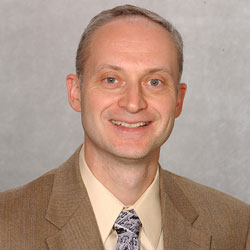 Len Tolstunov, DDS, DMD This presentation will discuss implant success and failure from the holistic approach and biologic balance that always exists between local and systemic factors. Loss of this balance and deterioration of key local factors and systemic condition will inevitably lead to a peri-implant bone loss and peri-implantitis. Surgical and some prosthetic considerations in implant failures will be discussed and clinical indices of implant success will be reviewed. Case presentations will help to review apical and marginal peri-implantitis. Inflammatory nature of peri-implantitis will be compared with non-inflammatory condition that can be classified as “peri-implantosis”. Treatment of peri-implantitis will be presented. Implant success will be defined as a dynamic process related to host’s health, as well as local factors, including bone and soft tissue quality around implant, implant design, and maintenance protocols. Finally, biologic principles of implant success at the time of implant placement and with age will be suggested. Recorded - January 19, 2022
Len Tolstunov, DDS, DMD This presentation will discuss implant success and failure from the holistic approach and biologic balance that always exists between local and systemic factors. Loss of this balance and deterioration of key local factors and systemic condition will inevitably lead to a peri-implant bone loss and peri-implantitis. Surgical and some prosthetic considerations in implant failures will be discussed and clinical indices of implant success will be reviewed. Case presentations will help to review apical and marginal peri-implantitis. Inflammatory nature of peri-implantitis will be compared with non-inflammatory condition that can be classified as “peri-implantosis”. Treatment of peri-implantitis will be presented. Implant success will be defined as a dynamic process related to host’s health, as well as local factors, including bone and soft tissue quality around implant, implant design, and maintenance protocols. Finally, biologic principles of implant success at the time of implant placement and with age will be suggested. Recorded - January 19, 2022 -
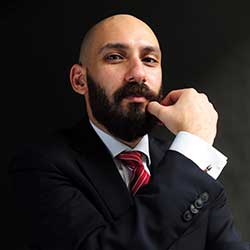 Torki, BDS, MSc In the past decade, efforts have been made to find the best treatment for immediate implant placement and with extraction sockets. Many protocols have been proposed such as ridge preservation, custom healing abutments and immediate loading. These protocols involve multiple steps and a waste of material. In this presentation, we will talk about methods to overcome these problems and minimize treatment time with digital solutions based on biology. Upon completion of this presentation, participants should be able to: 1) Describe the role of biological principles in abutment selection. 2) Explain the implant-abutment junction and its role in marginal bone stability. 3) Evaluate different methods for immediate temporization. Recorded – May 2, 2024
Torki, BDS, MSc In the past decade, efforts have been made to find the best treatment for immediate implant placement and with extraction sockets. Many protocols have been proposed such as ridge preservation, custom healing abutments and immediate loading. These protocols involve multiple steps and a waste of material. In this presentation, we will talk about methods to overcome these problems and minimize treatment time with digital solutions based on biology. Upon completion of this presentation, participants should be able to: 1) Describe the role of biological principles in abutment selection. 2) Explain the implant-abutment junction and its role in marginal bone stability. 3) Evaluate different methods for immediate temporization. Recorded – May 2, 2024 -
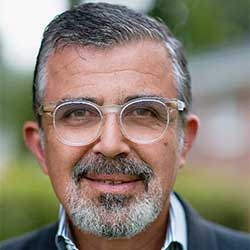 Irene Marron-Tarrazzi, DMD, MS The successful fabrication and delivery of fixed implant supported prosthesis is dependent upon a systematic interplay between the surgical and prosthetic treatment planning objectives. A paradigm shift has taken place as the Graftless surgical approach has gained credibility. Reduced treatment time, a single stage surgical reconstructions and immediate loading has resulted in a higher degree of case acceptance. Upon completion of this presentation, participants should be able to: 1) Identify the appropriate number of implants for full arch reconstructions. 2) Discuss the proper distribution of implants for full arch reconstructions. 3) Explain the use of Axial, tilted and zygoma implants for full arch maxillary reconstructions. Recorded - February 10, 2024
Irene Marron-Tarrazzi, DMD, MS The successful fabrication and delivery of fixed implant supported prosthesis is dependent upon a systematic interplay between the surgical and prosthetic treatment planning objectives. A paradigm shift has taken place as the Graftless surgical approach has gained credibility. Reduced treatment time, a single stage surgical reconstructions and immediate loading has resulted in a higher degree of case acceptance. Upon completion of this presentation, participants should be able to: 1) Identify the appropriate number of implants for full arch reconstructions. 2) Discuss the proper distribution of implants for full arch reconstructions. 3) Explain the use of Axial, tilted and zygoma implants for full arch maxillary reconstructions. Recorded - February 10, 2024 -
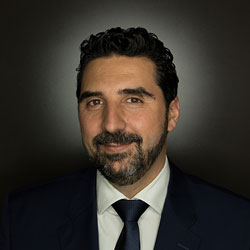 Pablo Galindo-Moreno, DDS, PhD This presentation will be focused on those surgical factors that are easier and more predictable maxillary sinus floor techniques.How these factors influence the consolidation of the graft used, prevent accidents and complications of these techniques and increase the long-term survival of implants placed in this location will be addressed. The choice of biomaterial suitable for these techniques will be discussed. Recorded - December 1, 2022
Pablo Galindo-Moreno, DDS, PhD This presentation will be focused on those surgical factors that are easier and more predictable maxillary sinus floor techniques.How these factors influence the consolidation of the graft used, prevent accidents and complications of these techniques and increase the long-term survival of implants placed in this location will be addressed. The choice of biomaterial suitable for these techniques will be discussed. Recorded - December 1, 2022 -
 Ghadeer Thalji, DDS, PhD Success of dental implants requires the clinicians to understand the many factors that must come together to achieve long term outcomes. The lecture will explore the current scientific evidence on decisions related to the number of dental implants in various clinical scenarios of the partially and fully edentulous patients. Recorded - September 21, 2021
Ghadeer Thalji, DDS, PhD Success of dental implants requires the clinicians to understand the many factors that must come together to achieve long term outcomes. The lecture will explore the current scientific evidence on decisions related to the number of dental implants in various clinical scenarios of the partially and fully edentulous patients. Recorded - September 21, 2021 -
 Tara Aghaloo, DDS, MD, PhD Dental implants are a known and predictable treatment option for missing teeth, where most patients today desire this therapy. Although implant survival is extremely high, these favorable outcomes depend greatly on proper case selection, minimizing medical risk factors, careful surgical and prosthetic execution, and prevention and management of complications. In clinical practice, patient demands are becoming more difficult to meet, where they often seek immediate implants with immediate function. This leaves the practicing clinician with a dilemma of meeting patient expectations, but often without scientific evidence for our treatment protocols. This presentation will update the practicing dentist on achieving the most ideal and successful implant outcomes, improving case presentations, obtaining increased case selection, and avoiding and managing complications. Recorded - June 5, 2021
Tara Aghaloo, DDS, MD, PhD Dental implants are a known and predictable treatment option for missing teeth, where most patients today desire this therapy. Although implant survival is extremely high, these favorable outcomes depend greatly on proper case selection, minimizing medical risk factors, careful surgical and prosthetic execution, and prevention and management of complications. In clinical practice, patient demands are becoming more difficult to meet, where they often seek immediate implants with immediate function. This leaves the practicing clinician with a dilemma of meeting patient expectations, but often without scientific evidence for our treatment protocols. This presentation will update the practicing dentist on achieving the most ideal and successful implant outcomes, improving case presentations, obtaining increased case selection, and avoiding and managing complications. Recorded - June 5, 2021 -
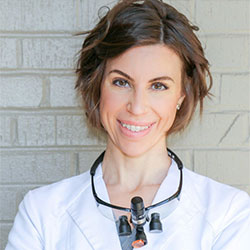 Courtney Donkoh, DDS This presentation will familiarize the audience with several types of facial growth patterns, as described in the literature by Dr. Arne Bjork. The audience will learn how to assess mandibular rotation and understand how to differentiate the various types of mandibular rotation, as described in the literature by Dr. Peter Buschang. Along the way, we will discuss interventions that influence mandibular rotation. Upon completion of this presentation, participants should be able to: 1) Describe the three types of forward mandibular rotation and two types of backward mandibular rotation. 2) Explain the difference between matrix rotation and true rotation of the mandible and describe how to assess both. 3) Identify six interventions that influence mandibular rotation. Recorded – March 19, 2024
Courtney Donkoh, DDS This presentation will familiarize the audience with several types of facial growth patterns, as described in the literature by Dr. Arne Bjork. The audience will learn how to assess mandibular rotation and understand how to differentiate the various types of mandibular rotation, as described in the literature by Dr. Peter Buschang. Along the way, we will discuss interventions that influence mandibular rotation. Upon completion of this presentation, participants should be able to: 1) Describe the three types of forward mandibular rotation and two types of backward mandibular rotation. 2) Explain the difference between matrix rotation and true rotation of the mandible and describe how to assess both. 3) Identify six interventions that influence mandibular rotation. Recorded – March 19, 2024 -
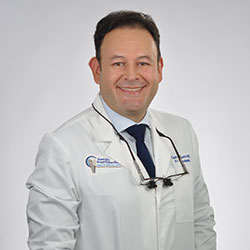 Carlos Castro, DDS This session will take a comprehensive look at the rationale for development and innovations in implant-supported denture planning and designs. Upon completion of this presentation, participants should be able to: 1) Discuss the evolution of implant-supported denture design and Its Impact on patient outcomes. 2) Explain biological considerations including osseointegration, tissue response, and long-term health. 3) Describe biomechanical perspectives: load distribution, prosthesis stability, and patient comfort Recorded – October 17, 2024
Carlos Castro, DDS This session will take a comprehensive look at the rationale for development and innovations in implant-supported denture planning and designs. Upon completion of this presentation, participants should be able to: 1) Discuss the evolution of implant-supported denture design and Its Impact on patient outcomes. 2) Explain biological considerations including osseointegration, tissue response, and long-term health. 3) Describe biomechanical perspectives: load distribution, prosthesis stability, and patient comfort Recorded – October 17, 2024 -
 T. Cem Sayin, DDS, PhD Clinicians are confronted with difficult decisions regarding whether a tooth with pulpal and/or periapical disease should be saved through endodontic treatment or be extracted and replaced with an implant. This lecture will review the endodontic and implant literature as well as the related factors that need to be considered by the clinician affecting decision making for their patients. Recorded - February 03, 2021
T. Cem Sayin, DDS, PhD Clinicians are confronted with difficult decisions regarding whether a tooth with pulpal and/or periapical disease should be saved through endodontic treatment or be extracted and replaced with an implant. This lecture will review the endodontic and implant literature as well as the related factors that need to be considered by the clinician affecting decision making for their patients. Recorded - February 03, 2021 -
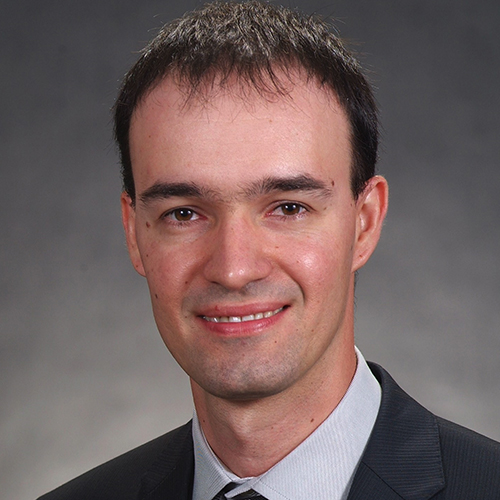 Gustavo Mendonca, DDS, MS, PhD It is critical to position and prepare ourselves with digital workflow in mind to be prepared and up to date with current technology. Digital technology is becoming more affordable in everyday dentistry. Combination of computed tomography and 3D scanning allows more advanced and predictable planning for treatment for implant cases. These advanced tools have great applications in clinical practice. This presentation will discuss steps of digital workflow for implant treatment planning and interim and final restorations utilizing intraoral scanners, CAD/CAM software and Recorded - May 17, 2022
Gustavo Mendonca, DDS, MS, PhD It is critical to position and prepare ourselves with digital workflow in mind to be prepared and up to date with current technology. Digital technology is becoming more affordable in everyday dentistry. Combination of computed tomography and 3D scanning allows more advanced and predictable planning for treatment for implant cases. These advanced tools have great applications in clinical practice. This presentation will discuss steps of digital workflow for implant treatment planning and interim and final restorations utilizing intraoral scanners, CAD/CAM software and Recorded - May 17, 2022 -
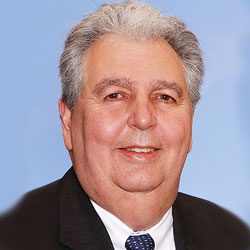 Joseph Fiorellini, DMD, DMSc The clinician has multiple decisions when treatment planning for a compromised dentition. The evaluation of teeth for retention or extraction can involve factors including bone volume, extent of periodontal bone loss and restorability. The balance of these factors will enhance the predictably of the implants in the compromised dentition. Recorded - January 22, 2022
Joseph Fiorellini, DMD, DMSc The clinician has multiple decisions when treatment planning for a compromised dentition. The evaluation of teeth for retention or extraction can involve factors including bone volume, extent of periodontal bone loss and restorability. The balance of these factors will enhance the predictably of the implants in the compromised dentition. Recorded - January 22, 2022 -
 Robert Lemke, DDS, MD This is an update after one-year of being in the trenches of COVID-19. What do we know now. Why we will need masks for another year and which ones to avoid. I will review immunology as it applies to COVID-19. Vaccines from history, phase studies, mechanisms, herd protection and mutations will all be reviewed. Finally an intro to being a vaccine injection center will be introduced. Recorded - March 4, 2021
Robert Lemke, DDS, MD This is an update after one-year of being in the trenches of COVID-19. What do we know now. Why we will need masks for another year and which ones to avoid. I will review immunology as it applies to COVID-19. Vaccines from history, phase studies, mechanisms, herd protection and mutations will all be reviewed. Finally an intro to being a vaccine injection center will be introduced. Recorded - March 4, 2021 -
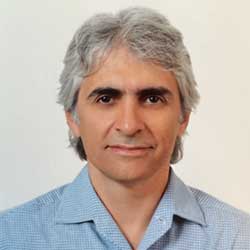 Serdar Yalçın, DDS, PhD This webinar will discuss the concept of digital implantology to perform successful and proper implant treatments in the aesthetic region. The use of basic concepts of implantology, especially from the planning outcome to the prosthetic outcome, will be reviewed. Upon completion of this presentation, participants should be able to: 1) Recommend optimal implant placement at the anterior region. 2) Create a Digital Implantology Workflow for immediate implantation and missing lateral incisors. 3) Describe the advantages and disadvantages of guided surgery. Recorded – June 12, 2024
Serdar Yalçın, DDS, PhD This webinar will discuss the concept of digital implantology to perform successful and proper implant treatments in the aesthetic region. The use of basic concepts of implantology, especially from the planning outcome to the prosthetic outcome, will be reviewed. Upon completion of this presentation, participants should be able to: 1) Recommend optimal implant placement at the anterior region. 2) Create a Digital Implantology Workflow for immediate implantation and missing lateral incisors. 3) Describe the advantages and disadvantages of guided surgery. Recorded – June 12, 2024 -
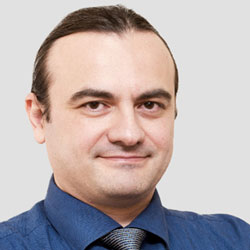 Kaan Orhan, DDS, MSc, MHM, PhD Dental implants have become part of routine treatment plans in many dental offices because of their popularity and acceptance by patients. Appropriate pre-placement planning, in which imaging plays a pivotal role, helps to ensure a satisfactory outcome. The development of precise pre-surgical imaging techniques and surgical templates allows the dentist to place these implants with relative ease and predictability. This presentation gives an overview of current practices in implant imaging for the practicing, with emphasis on selection criteria for imaging. Contemporary imaging techniques such as USG, MRI for dental implant planning, surgical phase, and also follow-up treatment will be discussed. Recorded - June 1, 2021
Kaan Orhan, DDS, MSc, MHM, PhD Dental implants have become part of routine treatment plans in many dental offices because of their popularity and acceptance by patients. Appropriate pre-placement planning, in which imaging plays a pivotal role, helps to ensure a satisfactory outcome. The development of precise pre-surgical imaging techniques and surgical templates allows the dentist to place these implants with relative ease and predictability. This presentation gives an overview of current practices in implant imaging for the practicing, with emphasis on selection criteria for imaging. Contemporary imaging techniques such as USG, MRI for dental implant planning, surgical phase, and also follow-up treatment will be discussed. Recorded - June 1, 2021

